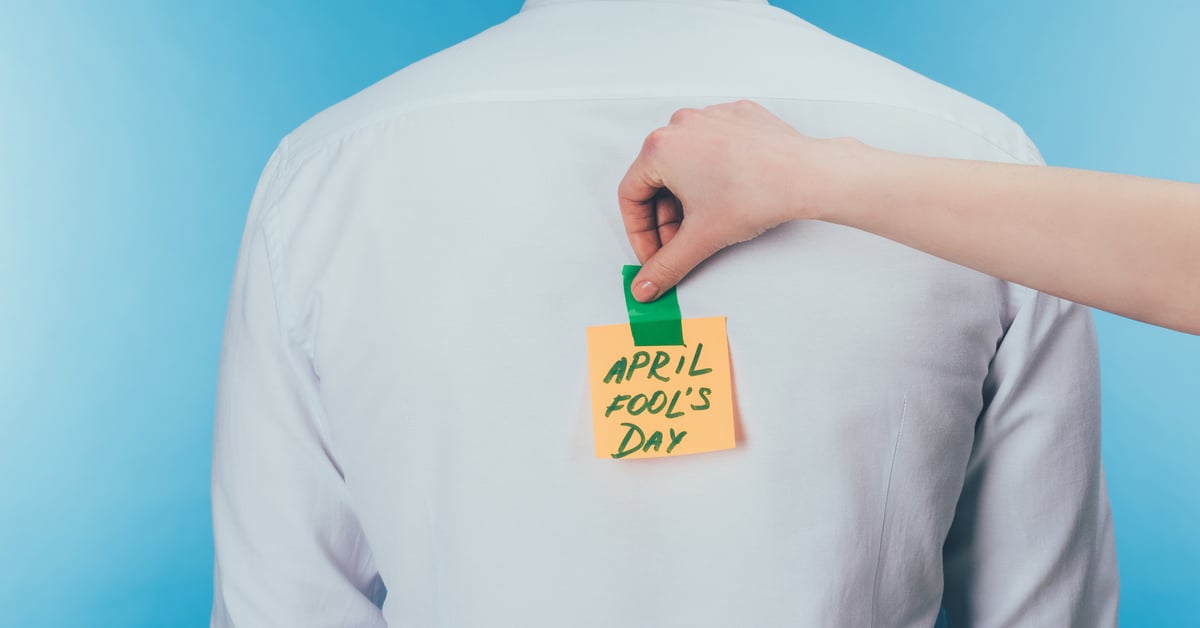As one of the least celebrated ‘holidays’ in Singapore, I personally feel that we have to give more credit to this day.
Unlike in Singapore, April Fools’ Day is actually a big deal in the European countries, and the list of classic pranks is endless.
Although it is not a public holiday (it really should be!), here are nine reasons why we should totally include it in our calendar!
Most famous theory
There isn’t an answer to the most frequently-asked question: When did April Fools begin?
The first association between 1st of April and ‘foolishness’ was seen in 1392.
In Chaucer’s Canterbury Tales (1392), the “Nun’s Priest’s Tale” is set Syn March bigan thritty dayes and two. People believe that there was a copying error and it was actually Syn March was gon.
Hence, what was originally supposed to be 32 days after March ends (2 May) became 32 days after March begins (1 April).
However, that was not the most supported theory. It was this: According to Fact Monster, New Year’s Day fell on/around the first of April in ancient cultures.
The day is set according to the spring/vernal equinox (first day of spring) which usually falls on either 20 March or 21 March.
On this special day, the sun shines directly on the equator, and we get almost equal hours of sunlight and nighttime.
In 1582, the Pope replaced the old Julian Calendar, which was predominant in the Roman world, with the Gregorian Calendar.
It is quite difficult to explain the whole leap year concept (you can read it here), but basically, the latter is now 13 days behind the former.
Alternatively, you can watch this video:
After the reform, New Year’s Day was ‘shifted’ to 1 Jan.
Of course, there will always be some blur sotongs out there who have no idea what’s going on.
Some continued to celebrate New Year’s Day on the first of April, and that’s how the ‘fool’ came about!
April Fools’ Day…s?
In Scotland, April Fools’ is celebrated over two days.
The second day is called “Taily day”, where people play pranks related to one’s tail (back).
The thirst for fun and laughter probably explains Scotland’s rising happiness index over the years.
Meanwhile in Singapore…everyone’s working lah.
Only till noon
According to The Independent, Britain started putting a duration to April Fools’ during the 17th century due to Shig-Shag day.
On this day, celebrants put oak sprigs in their hats to show loyalty to the monarchy, with reference to Charles II’s hiding in an oak tree.
Those that did not observe this tradition can only be ‘fooled’ until noon.
Instead, those who pull a prank after noon are known as the ‘fools’ instead.
So, want to appear high SES? Tell others about this if you kena fooled after noon. You’ll gain some respect and probably lose some friends #justsaying
BBC’s legendary pranks
On 1st April 1976, the BBC told its listeners that a temporary alignment of the planets will cause gravity on Earth to drop.
FYI, that didn’t happen. But the phone lines were flooded by callers who said that they felt it.
Oh well. Self-fulfilling at its best.
In another classic example, BBC claimes that spaghetti grows from “spaghetti trees”.
Hmm… (remember, back then, there was no Google)
Till now, the credible BBC is still religiously pulling pranks on its audience during April Fools’.
But I’m pretty sure with Google, no one’s gonna get pranked.
NASA too…
To join in the fun, NASA fooled everyone in 2002 with a picture that proved the moon was made of cheese.
And it even has an expiry date!
A spokesperson even advised to “completely devour the moon by tomorrow”.
It had to be the best joke for cheese lovers, thought I’m sure everyone, except SpongeBob, knew that it wasn’t real.
Not a joke!
To be honest, I’m one of those that will question all things on the ‘sacred’ day itself.
And to all those who were like me and ignored a tsunami warning, I’m sorry.
On 1 April 1946, people ignored a tsunami warning.
Let’s just say it wasn’t the best timing to ‘outsmart’ others.
On a relatively safer note, Google decided to launch Gmail on the eve of April Fools’.
And so many laughed it off cos the application had too-good-to-be-true features.
Oh well, Google strikes again!
Moron of the story: if you’ve any major event, don’t schedule it on the 1st of April.
Spring Fever
Actually, April Fools’ isn’t the only ‘silly’ festival being celebrated around the world.
For example, the Romans celebrate the Hilaria on 25 March, rejoicing in the resurrection of Attis, who represents the fruits of the earth, which die in winter and rise again in the spring.
The Hindu calendar has Holi, also known as the ‘Festival of Colours’.
The Jewish calendar has Purim, which celebrates the salvation that the Jews received.
These joyous and fun occasions coincide with the change in season, making March a highly-anticipated month!
Coinciding with Mercury Retrograde…
New phrase? Same.
You might think that it’s not that important cos you have never heard of it. But after this explanation, you better think twice…
Mercury retrograde refers to the period of time when the planet Mercury starts rotating so fast that it looks like it’s rotating backwards (calm down, it doesn’t).
Astrology enthusiasts would probably know this: Mercury rules over all types of communication.
When the planet retrogrades, things go haywire. In fact, some would advise to backup important information on our devices.
Here’s a video that explains more:
On some years, April Fools’ Day will coincide with a Mercury retrograde, which would lead to some real jokes turning bad (literally).
…and Easter
If you didn’t know, we just had a blessed Good Friday!
Good Friday falls on the Friday preceding Easter Sunday. Easter coincides with the Spring Equinox, which I’ve mentioned above.
Okay so what’s the link?
To make a long story short, Christians wanted a holiday to celebrate Christ’s resurrection, which happened after the Jewish Passover that was celebrated on the first full moon after the Equinox.
Since 1900, Easter and April Fools’ clashed four times:
1923, 1934, 1945, 1956 and 2018.
The next time would be 2029.



